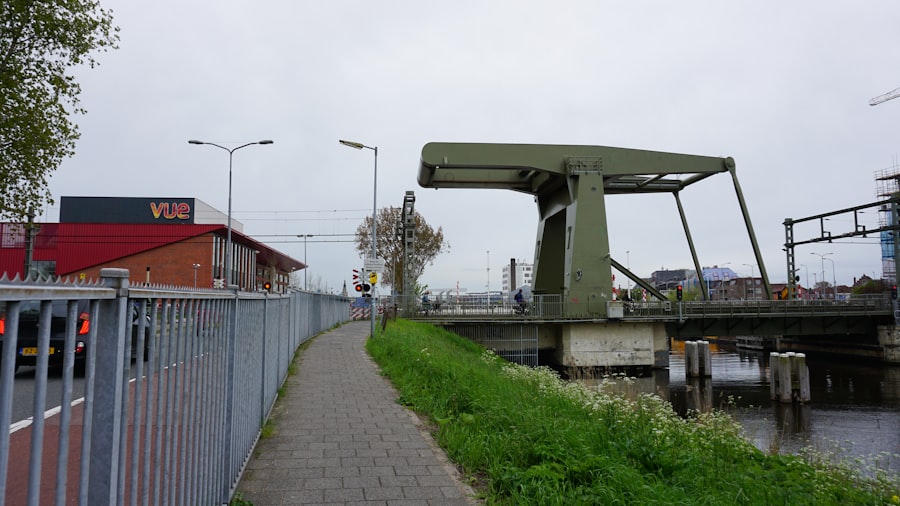Gray zone tactics represent a complex and evolving landscape of conflict that exists between traditional warfare and peaceful diplomacy. These tactics are characterized by ambiguity, deniability, and a blend of both military and non-military strategies. They often involve state and non-state actors employing a range of methods to achieve their objectives without crossing the threshold into open warfare.
This approach allows aggressors to exploit vulnerabilities in their adversaries while maintaining plausible deniability, complicating the response from those targeted. As nations navigate this intricate battleground, understanding gray zone tactics becomes essential for safeguarding national interests and infrastructure. The significance of gray zone tactics has grown in recent years, particularly in the context of NATO’s strategic landscape.
With the rise of hybrid threats, NATO member states face challenges that are not easily categorized as conventional military threats. Instead, these challenges often manifest through cyber attacks, disinformation campaigns, economic coercion, and other forms of subversion. As NATO infrastructure becomes increasingly vital to the alliance’s collective defense, it is imperative to examine how gray zone tactics specifically target these critical assets and what implications this has for regional security.
Key Takeaways
- Gray zone tactics are ambiguous and non-traditional methods used by state and non-state actors to achieve strategic objectives without triggering a conventional military response.
- NATO infrastructure includes a wide range of physical, digital, and human assets that are essential for the alliance’s operations and security.
- Recent attacks on NATO infrastructure have included cyber-attacks, disinformation campaigns, economic coercion, and hybrid warfare tactics.
- Cyber warfare poses a significant threat to NATO infrastructure, as demonstrated by recent large-scale cyber-attacks targeting member states.
- Disinformation campaigns aimed at undermining public trust in NATO and its member states are a growing concern for the alliance’s infrastructure security.
Understanding NATO Infrastructure
NATO infrastructure encompasses a wide array of facilities and systems that support the alliance’s military operations and strategic objectives. This includes command and control centers, logistics hubs, communication networks, and transportation routes that facilitate the rapid deployment of forces across member states. The robustness of this infrastructure is crucial for ensuring that NATO can respond effectively to any threat, whether it be conventional or unconventional in nature.
Moreover, NATO infrastructure is not limited to physical assets; it also includes the technological frameworks that underpin military operations. Advanced communication systems, satellite networks, and cyber capabilities are integral components that enhance situational awareness and operational effectiveness.
However, as these systems become more interconnected and reliant on digital technologies, they also become more vulnerable to gray zone tactics. Understanding the multifaceted nature of NATO infrastructure is essential for identifying potential weaknesses that adversaries may seek to exploit.
Examples of Recent Attacks on NATO Infrastructure

Recent years have witnessed a series of attacks targeting NATO infrastructure that exemplify the use of gray zone tactics. One notable incident occurred in Eastern Europe, where a series of cyber attacks disrupted communication networks used by NATO forces during joint exercises. These attacks not only aimed to undermine operational readiness but also sought to sow discord among member states by creating confusion and mistrust.
The implications of such actions extend beyond immediate operational impacts; they challenge the very cohesion of the alliance. In addition to cyber attacks, physical acts of sabotage have also been employed against NATO infrastructure. For instance, there have been reports of incidents involving the tampering of logistics routes used for troop movements and supply chains.
Such actions are designed to create logistical challenges and hinder the alliance’s ability to respond swiftly to emerging threats. By targeting critical infrastructure in this manner, adversaries aim to exploit vulnerabilities and create a perception of instability within NATO’s operational framework.
Cyber Warfare and NATO Infrastructure
| Metrics | Data |
|---|---|
| Number of Cyber Attacks | Increasing |
| NATO Infrastructure Vulnerability | High |
| Cyber Defense Budget | Increasing |
| Collaboration with Member States | Ongoing |
Cyber warfare has emerged as a prominent facet of gray zone tactics, posing significant challenges to NATO infrastructure. The interconnectedness of modern military systems means that a successful cyber attack can have far-reaching consequences, disrupting command and control capabilities and compromising sensitive information. Adversaries have increasingly recognized the potential of cyber operations as a means to achieve strategic objectives without engaging in direct military confrontation.
NATO has acknowledged the importance of cybersecurity in its defense strategy, recognizing that protecting its digital infrastructure is as crucial as safeguarding physical assets. The alliance has implemented various initiatives aimed at enhancing its cyber resilience, including the establishment of dedicated cyber defense teams and collaborative frameworks for information sharing among member states. However, as cyber threats continue to evolve in sophistication and scale, NATO must remain vigilant and adaptive in its approach to safeguarding its infrastructure against these insidious attacks.
Disinformation Campaigns and NATO Infrastructure
Disinformation campaigns represent another critical aspect of gray zone tactics that can undermine NATO infrastructure. These campaigns often involve the dissemination of false or misleading information aimed at creating confusion, eroding public trust, and influencing perceptions about NATO’s capabilities and intentions. By targeting both domestic audiences within member states and international observers, adversaries seek to weaken support for NATO initiatives and sow discord among allies.
The impact of disinformation campaigns can be particularly pronounced during times of crisis or heightened tensions. For instance, during military exercises or deployments, adversaries may launch coordinated efforts to spread false narratives about NATO’s actions or intentions. This can lead to public backlash against military operations or create divisions among member states regarding their commitment to collective defense.
As such, countering disinformation has become an essential component of NATO’s broader strategy to protect its infrastructure and maintain unity among allies.
Economic Coercion and NATO Infrastructure

Economic coercion is another tool employed by adversaries in the gray zone that can significantly impact NATO infrastructure. This tactic involves leveraging economic leverage—such as sanctions, trade restrictions, or energy dependencies—to achieve political objectives without resorting to military force. By targeting key economic sectors or critical supply chains, adversaries can create vulnerabilities that undermine NATO’s operational capabilities.
For example, energy security is a vital concern for many NATO member states, particularly those reliant on external sources for their energy needs. Adversaries may exploit these dependencies by manipulating energy supplies or prices to exert pressure on governments and influence their decision-making processes. Such economic coercion can have cascading effects on military readiness and operational planning, highlighting the need for NATO to develop strategies that enhance resilience against economic threats.
Hybrid Warfare and NATO Infrastructure
Hybrid warfare encapsulates the multifaceted nature of contemporary conflict, blending conventional military force with unconventional tactics such as cyber operations, disinformation campaigns, and economic coercion. This approach allows adversaries to exploit vulnerabilities across various domains while maintaining plausible deniability regarding their actions.
NATO’s infrastructure is particularly susceptible to hybrid warfare tactics due to its reliance on interconnected systems and networks. Adversaries may seek to disrupt operations through a combination of cyber attacks, misinformation campaigns, and physical sabotage—all aimed at undermining the alliance’s ability to function effectively. To counter these threats, NATO must adopt a comprehensive approach that integrates military readiness with robust cybersecurity measures and strategic communication efforts.
NATO’s Response to Gray Zone Tactics
In response to the evolving landscape of gray zone tactics, NATO has taken significant steps to enhance its resilience against these multifaceted threats. The alliance has recognized the need for a proactive approach that encompasses not only military readiness but also diplomatic engagement and information warfare strategies. By fostering collaboration among member states and developing joint capabilities, NATO aims to deter adversaries from exploiting vulnerabilities in its infrastructure.
One key aspect of NATO’s response has been the establishment of specialized units focused on countering hybrid threats. These units are tasked with monitoring potential vulnerabilities within NATO infrastructure and developing strategies to mitigate risks associated with gray zone tactics. Additionally, NATO has prioritized information sharing among member states to ensure a coordinated response to disinformation campaigns and other forms of subversion.
Future Threats to NATO Infrastructure
As the geopolitical landscape continues to evolve, future threats to NATO infrastructure are likely to become more complex and sophisticated. Adversaries may increasingly leverage emerging technologies such as artificial intelligence and machine learning to enhance their capabilities in cyber warfare and disinformation campaigns. The rapid pace of technological advancement presents both opportunities and challenges for NATO as it seeks to adapt its strategies in response.
Moreover, the growing interconnectedness of global supply chains raises concerns about vulnerabilities that could be exploited by adversaries seeking to disrupt NATO operations. As nations become more reliant on digital technologies and interconnected systems, the potential for cascading failures increases in the event of a successful attack on critical infrastructure. To address these challenges, NATO must remain agile in its approach, continuously assessing emerging threats and adapting its strategies accordingly.
Collaborative Efforts to Protect NATO Infrastructure
Collaboration among member states is essential for effectively protecting NATO infrastructure from gray zone tactics. The alliance has recognized that no single nation can address these complex challenges alone; therefore, fostering partnerships and information sharing is crucial for enhancing collective resilience. Joint exercises focused on cybersecurity and hybrid threat scenarios have become integral components of NATO’s training programs.
Additionally, collaboration extends beyond military alliances; partnerships with private sector entities involved in critical infrastructure protection are increasingly important. Engaging with technology companies and cybersecurity firms can provide valuable insights into emerging threats and innovative solutions for safeguarding NATO’s digital assets. By leveraging expertise from various sectors, NATO can enhance its overall resilience against gray zone tactics.
The Importance of Defending NATO Infrastructure
In conclusion, defending NATO infrastructure against gray zone tactics is paramount for ensuring the alliance’s continued effectiveness in an increasingly complex security environment. As adversaries employ a range of unconventional methods to exploit vulnerabilities, it is essential for NATO member states to adopt a comprehensive approach that encompasses military readiness, cybersecurity measures, strategic communication efforts, and collaborative partnerships. The integrity of NATO infrastructure is not only vital for operational success but also serves as a symbol of collective defense among member states.
By prioritizing resilience against gray zone tactics, NATO can maintain its deterrence posture while fostering unity among allies in the face of evolving threats. Ultimately, safeguarding this critical infrastructure will be instrumental in preserving peace and stability in an uncertain world.
In recent years, the concept of “gray zone” tactics has become increasingly relevant, particularly in the context of threats against NATO infrastructure. These tactics, which fall between traditional warfare and peacetime competition, often involve cyber attacks, disinformation campaigns, and other forms of hybrid warfare. An insightful article on this topic can be found on the In The War Room website, which delves into the complexities and challenges posed by these unconventional strategies. For a deeper understanding of how gray zone tactics are being employed against NATO, you can read more in this related article.
WATCH THIS! The FSB’s Hidden War on Europe’s Pipelines
FAQs
What are gray zone tactics?
Gray zone tactics are actions taken by a state or non-state actor to achieve strategic objectives while remaining below the threshold of conventional military conflict. These tactics often involve the use of unconventional methods such as cyber attacks, disinformation campaigns, economic coercion, and proxy warfare.
What is NATO infrastructure?
NATO infrastructure refers to the physical and logistical assets, including military bases, communication networks, and transportation routes, that are used to support the operations and activities of the North Atlantic Treaty Organization (NATO) member countries.
What are some examples of gray zone tactics used against NATO infrastructure?
Examples of gray zone tactics used against NATO infrastructure include cyber attacks targeting communication and command systems, disinformation campaigns aimed at undermining public support for NATO, economic coercion to disrupt supply chains and logistics, and proxy warfare through support for insurgent groups in NATO member countries.
How does NATO respond to gray zone tactics against its infrastructure?
NATO responds to gray zone tactics against its infrastructure through a combination of diplomatic efforts, intelligence sharing, strengthening of cyber defenses, and coordination with member countries to counter disinformation and economic coercion. NATO also conducts exercises and training to enhance its ability to respond to unconventional threats.




